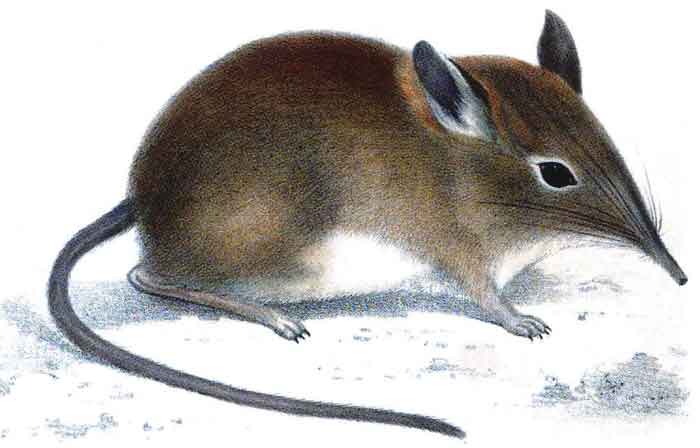
Superregnum: Eukaryota
Cladus: Unikonta
Cladus: Opisthokonta
Cladus: Holozoa
Regnum: Animalia
Subregnum: Eumetazoa
Cladus: Bilateria
Cladus: Nephrozoa
Superphylum: Deuterostomia
Phylum: Chordata
Subphylum: Vertebrata
Infraphylum: Gnathostomata
Megaclassis: Osteichthyes
Cladus: Sarcopterygii
Cladus: Rhipidistia
Cladus: Tetrapodomorpha
Cladus: Eotetrapodiformes
Cladus: Elpistostegalia
Superclassis: Tetrapoda
Cladus: Reptiliomorpha
Cladus: Amniota
Cladus: Synapsida
Cladus: Eupelycosauria
Cladus: Sphenacodontia
Cladus: Sphenacodontoidea
Cladus: Therapsida
Cladus: Theriodontia
Cladus: Cynodontia
Cladus: Eucynodontia
Cladus: Probainognathia
Cladus: Prozostrodontia
Cladus: Mammaliaformes
Classis: Mammalia
Subclassis: Trechnotheria
Infraclassis: Zatheria
Supercohors: Theria
Cohors: Eutheria
Magnordo: Epitheria
Superordo: Afrotheria
Cladus: Afroinsectiphilia
Cladus: Afroinsectivora
Ordo: Macroscelidea
Familia: Macroscelididae
Subfamilia: Macroscelidinae
Tribus: Elephantulini
Genus: Elephantulus
Species:Elephantulus rupestris
Name
Elephantulus rupestris (A. Smith, 1831)
References
Elephantulus rupestris in Mammal Species of the World.
Wilson, Don E. & Reeder, DeeAnn M. (Editors) 2005. Mammal Species of the World – A Taxonomic and Geographic Reference. Third edition. ISBN 0-8018-8221-4.
IUCN: Elephantulus rupestris (A. Smith, 1831) (Least Concern)
Vernacular names
català: Musaranya elefant roquera
Ελληνικά: Βραχόδης Ελεφαντομέγαιρα
English: Western Rock Elephant Shrew, Western Rock Sengi
The western rock elephant shrew or western rock sengi (Elephantulus rupestris) is a species of elephant shrew in the family Macroscelididae. It is found in Namibia, South Africa, and possibly Angola and Botswana. Its natural habitats are subtropical or tropical dry shrubland and rocky areas.[2]
Smaller members of western rock elephant shrew possess functional brown adipose tissue, which changes in thermogenic capacity depending on the season.[3]
References
Schlitter, D.A. (2005). Wilson, D.E.; Reeder, D.M. (eds.). Mammal Species of the World: A Taxonomic and Geographic Reference (3rd ed.). Johns Hopkins University Press. p. 83. ISBN 978-0-8018-8221-0. OCLC 62265494.
Rathbun, G.B.; Smit-Robinson, H. (2015). "Elephantulus rupestris". IUCN Red List of Threatened Species. 2015: e.T7138A21290631. doi:10.2305/IUCN.UK.2015-2.RLTS.T7138A21290631.en. Retrieved 12 November 2021.
Boyles, Justin (January 2012). "Body temperature patterns in two syntopic elephant shrew species during winter". Comparative Biochemistry and Physiology Part A: Molecular & Integrative Physiology. 161 (1): 89–94. doi:10.1016/j.cbpa.2011.09.007. PMID 21964153 – via Science Citation Index.
Retrieved from "http://en.wikipedia.org/"
All text is available under the terms of the GNU Free Documentation License

